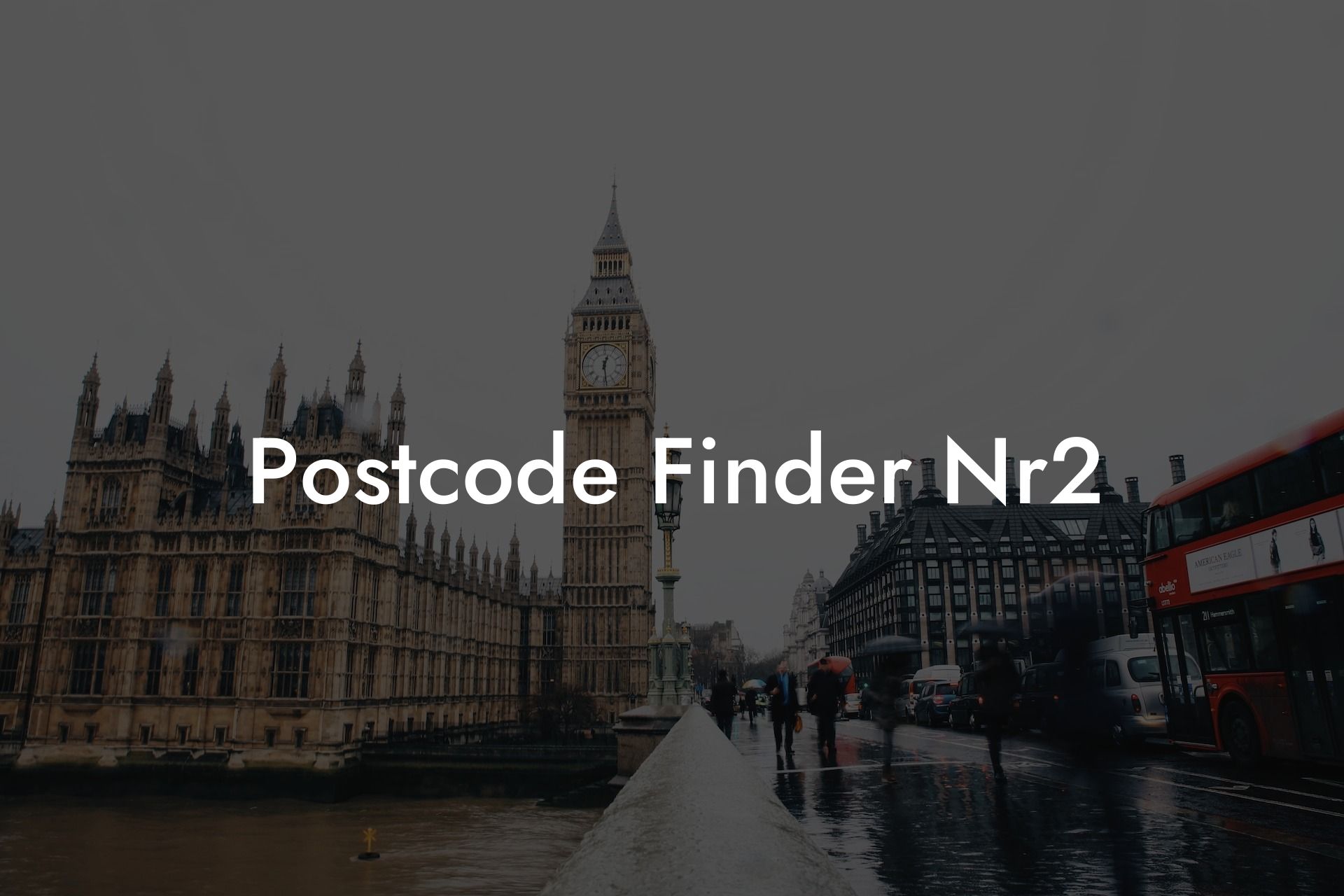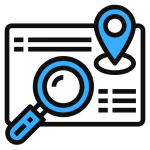Introduction to NR2 Postcode
The NR2 postcode area is a vital part of Norwich, covering the city centre and its surrounding areas. As the hub of Norfolk's capital, NR2 is home to a diverse range of businesses, attractions, and residential areas. In this article, we'll delve into the intricacies of the NR2 postcode, providing you with a comprehensive guide to understanding its boundaries, demographics, and amenities.
Are you working on a Product, Service, App or Research Project that needs UK Postcode & location data? Get a free sample of our UK Postcode Database today. Find out more →
NR2 Postcode Boundaries
The NR2 postcode area is situated in the heart of Norwich, encompassing the city centre and its immediate surroundings. The postcode boundaries stretch from the River Wensum in the north to the A146 road in the south, and from the A147 road in the east to the A1067 road in the west. This area includes popular neighbourhoods such as the Lanes, Tombland, and the historic city centre.
Demographics of NR2
According to the 2011 census, the NR2 postcode area has a population of approximately 12,000 residents. The demographic makeup of NR2 is diverse, with a mix of young professionals, families, and students. The area is also home to a significant number of businesses, including retail, hospitality, and financial services. The average age of residents in NR2 is 34, with a slightly higher proportion of females to males.
Housing in NR2
The NR2 postcode area boasts a range of housing types, from historic buildings to modern apartments and flats. The area is characterized by a mix of Victorian-era terraced houses, converted warehouses, and new-build developments. The average house price in NR2 is around £250,000, although prices can vary greatly depending on the location, size, and condition of the property. Renters can expect to pay around £1,000-£1,500 per month for a one-bedroom apartment.
Amenities and Attractions in NR2
NR2 is spoiled for choice when it comes to amenities and attractions. The area is home to Norwich Cathedral, the Castle Mall shopping centre, and the historic Norwich Market. Residents and visitors can also enjoy a range of restaurants, bars, and cafes, as well as cultural attractions like the Theatre Royal and the Sainsbury Centre for Visual Arts. The area is well-connected, with regular bus services and a mainline train station at Norwich Railway Station.
Education in NR2
NR2 is served by a range of educational institutions, including primary and secondary schools, as well as the University of East Anglia. The area is also home to Norwich City College, which offers a range of vocational courses and apprenticeships. For younger children, there are several nurseries and childcare providers in the area, offering flexible and affordable options for working parents.
Transportation in NR2
NR2 is well-connected to the surrounding areas and the rest of the country. The area is served by regular bus services, including the First Bus and Konectbus networks. Norwich Railway Station is located in the heart of NR2, offering direct trains to London, Cambridge, and other major cities. For drivers, the area is accessible via the A146 and A147 roads, which connect to the A11 and M11 motorways.
Crime and Safety in NR2
Like any urban area, NR2 experiences its fair share of crime. However, according to police statistics, the area is considered relatively safe, with low rates of violent crime and burglary. The Norfolk Constabulary has a dedicated team of community police officers who work closely with local residents and businesses to prevent crime and improve safety. Additionally, the area is well-lit and has a strong presence of CCTV cameras, helping to deter criminal activity.
Frequently Asked Questions
What is a postcode, and why is it important?
A postcode is a series of letters and numbers used to identify a specific geographic area, such as a street, town, or city. It's essential for various purposes, including mail delivery, navigation, and location-based services. Accurate postcode information helps ensure that your packages, letters, and online orders reach their intended destinations efficiently.
How do I find my postcode?
You can find your postcode by using our Postcode Finder NR2 tool, which provides accurate and up-to-date location data. Simply enter your address or location, and our system will generate your postcode. You can also check your mail, utility bills, or online accounts, as they often display your postcode.
What is the format of a postcode?
In the UK, a postcode typically consists of a combination of letters and numbers, separated into two parts: the outward code and the inward code. The outward code identifies the postal town, district, or sector, while the inward code specifies the individual address or street.
How do postcodes work?
Postcodes are used by postal services, courier companies, and other organizations to sort and deliver mail and packages efficiently. They help route items to the correct local post office, and then to the specific address. Postcodes also aid in geolocation, enabling GPS navigation and location-based services.
Can I use a postcode to find my location?
Yes, you can use a postcode to find your location. Our Postcode Finder NR2 tool allows you to enter your postcode and retrieve your exact location, including the latitude and longitude coordinates. This information can be useful for various purposes, such as planning routes, finding nearby amenities, or identifying your location on a map.
How accurate is postcode data?
Our postcode data is highly accurate and regularly updated to ensure that it reflects the latest changes in postal codes and geographic boundaries. We source our data from reliable authorities, such as the Royal Mail and Ordnance Survey, to provide the most precise and up-to-date information.
What is the difference between a postcode and a zip code?
A postcode and a zip code are both used for geographic identification, but they differ in format and usage. Postcodes are primarily used in the UK and other European countries, while zip codes are used in the United States. Postcodes typically consist of a combination of letters and numbers, whereas zip codes are numeric only.
Can I use a postcode to find nearby amenities?
Yes, you can use a postcode to find nearby amenities, such as shops, restaurants, schools, or healthcare services. Our Postcode Finder NR2 tool provides location-based data, enabling you to search for nearby points of interest and plan your route accordingly.
How do I use a postcode to find my nearest post office?
You can use our Postcode Finder NR2 tool to find your nearest post office. Simply enter your postcode, and our system will provide the location and contact details of nearby post offices. You can also use online directories or postal service websites to find post office locations.
What is the history of postcodes in the UK?
The concept of postcodes in the UK dates back to the 1850s, but the modern postcode system was introduced in the 1960s. The system has undergone several changes and updates since then, with the most significant revision occurring in 2001. Today, postcodes play a vital role in the UK's mail delivery and location-based services.
How do postcodes affect mail delivery?
Postcodes play a crucial role in mail delivery, as they enable postal services to sort and route mail efficiently. Accurate postcodes ensure that mail is delivered to the correct address, reducing the risk of misdelivery and delays.
Can I use a postcode to find my electoral ward?
Yes, you can use a postcode to find your electoral ward. Our Postcode Finder NR2 tool provides location-based data, including electoral ward information. You can also contact your local council or election office to find your electoral ward using your postcode.
How do postcodes impact emergency services?
Postcodes are essential for emergency services, such as ambulance, fire, and police departments. Accurate postcodes enable emergency responders to quickly locate addresses and respond to emergencies efficiently.
Can I use a postcode to find my local council?
Yes, you can use a postcode to find your local council. Our Postcode Finder NR2 tool provides location-based data, including local council information. You can also search online or contact your local government office to find your local council using your postcode.
What is the significance of postcode sectors?
Postcode sectors are sub-divisions of postcodes that identify specific geographic areas within a postal district. They are used to further refine location data, enabling more accurate navigation and location-based services.
How do postcodes affect property prices?
Postcodes can impact property prices, as certain areas are considered more desirable due to factors like proximity to amenities, schools, or transportation links. A postcode can influence the value of a property, with more sought-after areas typically commanding higher prices.
Can I use a postcode to find my nearest school?
Yes, you can use a postcode to find your nearest school. Our Postcode Finder NR2 tool provides location-based data, enabling you to search for nearby schools and educational institutions.
How do postcodes impact business operations?
Postcodes are essential for businesses, as they enable efficient delivery, logistics, and customer service. Accurate postcodes also help businesses target specific geographic areas for marketing and advertising purposes.
Can I use a postcode to find my nearest hospital?
Yes, you can use a postcode to find your nearest hospital. Our Postcode Finder NR2 tool provides location-based data, enabling you to search for nearby healthcare facilities and medical services.
What is the role of postcodes in navigation and GPS?
Postcodes play a crucial role in navigation and GPS, as they provide precise location data for routing and direction-finding. Many GPS devices and mapping services use postcodes to provide accurate turn-by-turn directions.
How do postcodes impact online shopping?
Postcodes are essential for online shopping, as they enable accurate delivery and shipping estimates. Many e-commerce websites use postcodes to calculate shipping costs, determine delivery times, and provide location-based services.
Can I use a postcode to find my nearest police station?
Yes, you can use a postcode to find your nearest police station. Our Postcode Finder NR2 tool provides location-based data, enabling you to search for nearby law enforcement agencies and police stations.
What is the future of postcodes in the digital age?
The future of postcodes lies in their integration with emerging technologies, such as artificial intelligence, blockchain, and the Internet of Things (IoT). As location-based services continue to evolve, postcodes will remain a vital component of our digital infrastructure.


